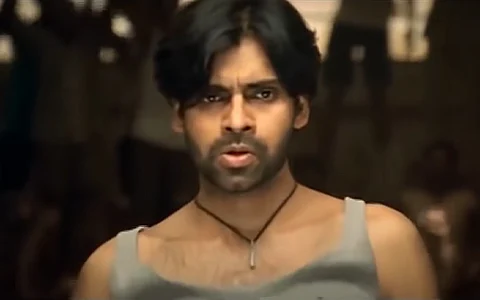
- Reviews
- Power List 2024
- Cannes 2024
- In-Depth Stories
- Web Stories
- News
- FC Lists
- Interviews
- Features
- FC SpecialsFC Specials

The action in the Pawan Kalyan's 2003 movie Johnny is 'realistic'. Not in the absolute sense, but relative to the over-the-top SUVs flying in air and bodies defying gravity in slow motion prevalent in Telugu cinema. Since as a country we have socially distanced ourselves from pure-genre films, for the action in our movies to work, the emotion behind it needs to be strong, if not melodramatic. Johnny got this part better than most movies.
Action in Johnny is organic to the plot. The protagonist is a martial arts teacher (played by Pawan Kalyan, who is a trained martial artist in real life). As the mood of the movie shifts from bright to sombre, the fights change in tone. In the first half, the fights follow the template of one man beating up a bunch of goons. Read that as a trained martial artist taking down untrained opponents with minimal effort. In the second half, most fights are one-on-one, staged in the middle of a fighting ring: a martial artist fighting physically towering opponents with proficiency in different art forms. You see blood, you see the hero fall in the face of superior adversaries before rising back.
And Johnny had some of the best fight choreography (done by Pawan Kalyan himself) in Indian cinema till that point. For a nation where technically unsound and even illegal exchanges of blows were passed off inside boxing rings in films (watch Boxer or any of the 1970s and 1980s movies, where the protagonist is any sort of fighter to witness this), it was the closest that an action hero in Indian cinema came to what Sylvester Stallone achieved in his classic Rocky. The fights in Rocky were for the most part choreographed by Stallone himself. What seems unbelievable on paper – a lanky Johnny defeating fighters 3 times his size – is made believable through the convincing action sequences, well-timed blocks and the effect of a smart takedown that throws the opponent off balance. It is such a loss then that we never got to see this part of Pawan Kalyan post Johnny. He quickly receded behind a padding of slow motion, VFX and fantasy sequences.
The failure of Johnny pushed the storytelling in Telugu cinema back by a decade and it made Pawan Kalyan, like the rest of the stars, go back to playing one-dimensional, larger-than-life characters. The action suffered as a result of this. After all, how many innovative ways can you think of making your star hero look like superman? Thereon it became a case of quantity over quality: do we blow up three SUVs or six? At the interval, does the hero kill 50 villains or 60? Where does the background score lie on a scale of jarring to deafening? In Johnny, the background score was also designed in sync with the mood of the fight sequence. In the first half, where Johnny fights roadside goons and amateur fighters, the score is peppy and upbeat. When the action moves to the dockyards of Mumbai in the second half, we hear more intense and, at times, grim music. In my mind, I have rooted for Johnny and cheered at his fiercely fought victories much more than in Vakeel Saab.
The action in Johnny is not LA-studio slick, but stylish in a quaint Hyderabad old-city way; the set pieces are not mounted on an epic scale, but fit perfectly into the jigsaw puzzle of the world of Johnny that Pawan Kalyan envisioned and that is the kind of action that is essential for the kind of movies we primarily make in our country. The kind where action is only one of the elements in a complex periodic table.